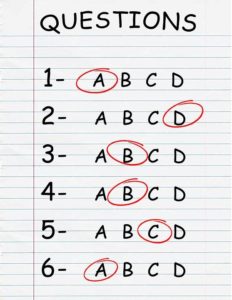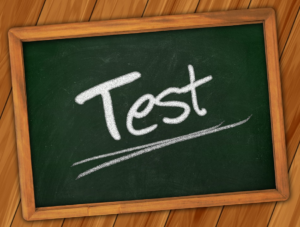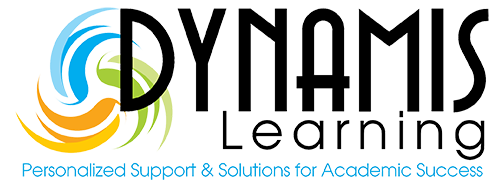 Yes, the school year has begun and so has the testing! No matter what your thoughts are on these standardized tests, they can be compared somewhat to taxes…they’re both inevitable. So, how can we help our kids do better on these tests, thus alleviating some of their stress in this regard? Well, that’s exactly what we’re going to be discussing in our new 4 part series on test taking strategies.
Yes, the school year has begun and so has the testing! No matter what your thoughts are on these standardized tests, they can be compared somewhat to taxes…they’re both inevitable. So, how can we help our kids do better on these tests, thus alleviating some of their stress in this regard? Well, that’s exactly what we’re going to be discussing in our new 4 part series on test taking strategies.
The first type of tests we’re going to be talking about is the multiple choice, norm referenced tests, such as the IOWA, Stanford, and ITBS. Let’s start with a little background on these tests. Norm referenced tests are generally described as nationally normed and standardized. This means the tests were developed to measure achievement levels in a general sense. A large and general sample of students are then chosen to develop a profile of the average score a student should achieve in a designated grade level. Thus, the standard is developed by which all other student performance is measured. The scores are most often presented in the form of a percentile. Should you score in the 70th percentile, it means you have done better that 70% of the students who took the test.
One method to being successful on these types of tests is to employ the R.E.A.D. methodology. Begin by really reading (R) the questions and blocking out the facts. This means that you dissect the question first, before reading any selections or looking at the answers. Even though this tactic seems simple, it is often overlooked and the question is read once, quickly, and then all concentration goes to the possible answers. By reversing this common path and focusing on the question first, the student enters into the arena with a better understanding of what information they need in a correct answer. Here, it is advisable to underline or highlight key words and phrases in the question so that you can consider each possible answer, then compare it back to the original question.
Secondly, it is always helpful to eliminate (E) obviously wrong answers. These could be answers that don’t even deal with the subject matter of the question. They are usually pretty blatant in their erroneous statements. Go ahead and cross them off your sheet manually if you are using a paper test. If the test is an online version, sometimes you can use an edit tool to wipe out the erroneous text altogether. In doing this, you are visually narrowing down your arena of correct choices, which actually helps your brain focus better.Test Taking Tip
Next, consider that the answer (A) really IS on the page. There will be times when it seems like all your choices are wrong, and that they may have  forgotten to put the correct one down. Consequently, there is one answer that will be considered correct, and it is your job to find it. Concentrate on finding the choice that best resolves the question at hand.
forgotten to put the correct one down. Consequently, there is one answer that will be considered correct, and it is your job to find it. Concentrate on finding the choice that best resolves the question at hand.
Finally, do (D) the easy questions first. This has been taught in schools for decades, but like most classics, it has value even in today’s modern world. As most of the norm referenced tests are timed, it is vital that you pace yourself; thus, this is a great way to do it. By completing the easiest questions first, you are then able to spend the majority of your time on the ones that will require more thought.
In utilizing these simple, yet rewarding suggestions, you and your child might be pleasantly surprised by this year’s score. Be sure to click on the image below to get our list of the 4 top test-taking strategies that can help your children do well on norm referenced tests and ones taken in the classroom. In the coming weeks, we will be discussing each of these four in detail.
